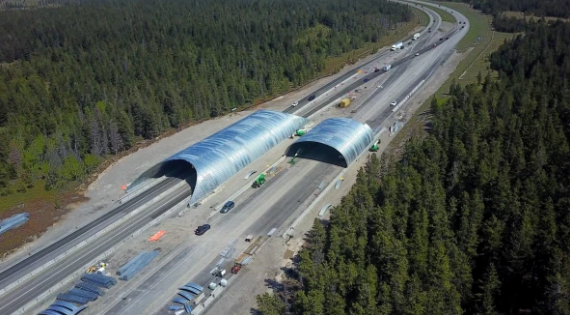Elk, deer, bears and other wildlife will soon have much safer passage across a portion of the busy Trans-Canada Highway west of Calgary. The province of Alberta is footing the bill for a $12 million structure across all four lanes.
“One side of the bridge is going to be higher than the other side of the bridge,” Jill Robertson, Dialog landscape architect and partner, told Fast Company. “So, there’s a lowland condition and upland condition. We’ve tried to mimic that in the planting design so that really feels like on day-one it has been there, and then as it grows over time, it will continue to mature and feel like a natural, functional part of the ecosystem.”
The first wildlife crossing built 30 years earlier in Banff National Park reduced elk-vehicle collisions from about 100 each year to nearly zero. In addition to safety, studies also show wildlife crossings help boost genetic diversity since animals on each side of the highway better mix together.
Crews will cover the steel archways with soil and vegetation and add fencing to funnel animals to the overpass. Officials say smaller animal species tend to use crossings almost immediately with the larger species to follow.
“That aligns with the animals learning to use it as part of their migration patterns,” Robertson told Fast Company. “So really, the best way to encourage use for those bigger mammals is just time for it to grow and evolve and adapt like a natural landscape does.”
(Photo credit: Dialog)
